Last Updated on November 22, 2025 by Emma Fajcz | Published: October 7, 2019
In Italy, cheese isn’t just something you eat. It represents where you are from and the history of your region.
As you might have guessed, this means there are a lot of different cheeses in Italy.
Just like with bread, cured meat and pasta shapes, cheese in Italy is a geographical marker. Wherever you go on the peninsula or islands, there is bound to be a longstanding tradition of cheesemaking, and the diversity of types and uses is staggering.
Cheese can be made from the milk of cows, sheep, goats or buffalo. It can be eaten a few minutes after making or aged so long that it must be grated. Some cheeses are used for cooking, others are eaten by themselves.
If you go to Italy, you’re going to need a guide to Italian cheese. What we’ve done here is put together a list that not only gives you the names of cheeses, but of the major categories, so that you’ll know your Grana from your Parmigiano, and why all mozzarella isn’t created equal.
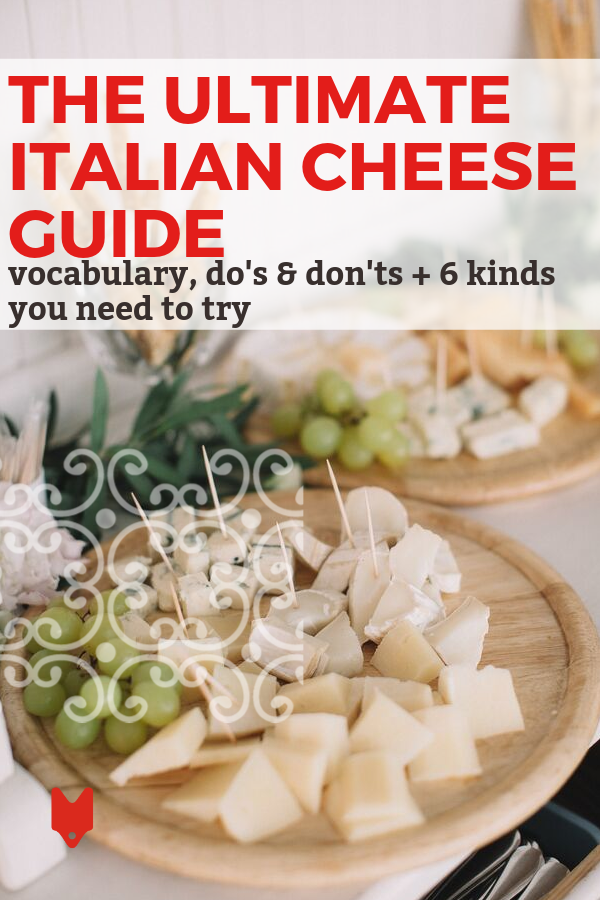
When do you eat cheese in Italy?
Cheese finds its way into everything in Italy, even sweets. It can be served as part of an antipasto, along with cured meats and olives, or as a pre-dessert plate with fruit and honey. Antipasto cheeses tend to be fresher, and after-dinner ones more aged. For lunch, many Italians might even just make themselves a spread with cheese, prosciutto, bread and tomatoes.
And, of course, there’s the eternal question: When can you put grated cheese on pasta? Cheese is usually not put on pasta with seafood, minced garlic, or briny ingredients like olives or capers. There are always exceptions to this (in Rome, for example, there’s a famous dish of gnocchi with mussels and pecorino). But as a general rule, if the waiter doesn’t bring you cheese, it usually means the dish doesn’t need it.
Some basic cheese vocabulary
Because there are so many restrictions on importing Italian cheeses to the United States, if you’re American, you’re invariably going to encounter cheeses in Italy whose names you’ll never see in your local deli. However, there are some key terms that are good to know.
Stagionato is the Italian word for “aged,” and you’ll often see this used as a descriptor on menus—semi-stagionato is “semi-aged,” stagionato 48 mesi is “48-month aged,” and so on.
The two other abbreviations you are likely to see are D.O.P and I.G.P. The former stands for denominazione di origine protetta. It means the cheese is produced in its traditional zone, using traditional methods, and most importantly, ingredients from that zone. This is the highest standard of quality and authenticity a cheese can have.
I.G.P, or indicazione geografica protetta, is less restrictive. At least one major step of production must take place in the traditional geographic zone, but the ingredients can come from other areas.
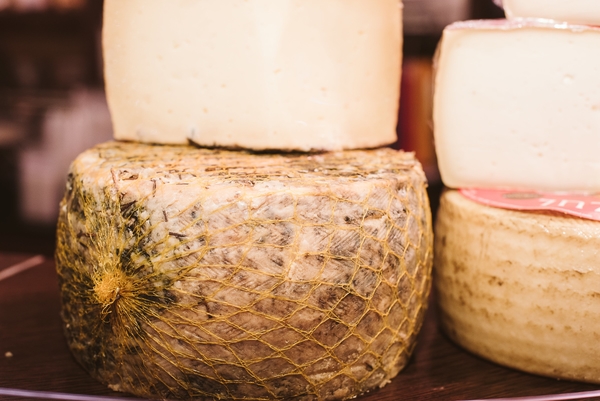
A list of the most essential Italian cheeses
1. Parmigiano and Grana
Parmigiano is undoubtedly the most famous and beloved cheese in Italy. It’s grated, eaten as a snack, and even the rind is tossed into soups to add flavor. This popularity, however, has led to much confusion and mislabeling.
True Parmigiano Reggiano DOP is a very specific cheese, made from high-fat milk from grass-fed cows raised in a small geographical zone that includes most of western Emilia-Romagna and a portion of Mantova in Lombardia. Parmigiano is aged for at least 12 months, often times double or triple that, which lends it a characteristic nutty-sweet flavor and delicious white spots of crystalized protein. The pre-grated stuff in the supermarket bears no relation to this.
A close cousin of Parmigiano is Grana Padano. Grana gets its name from “grain,” because like Parmigiano, it has a flaky, grainy texture. It’s produced in a wider area that overlaps with that of Parmigiano, and has fewer restrictions: The cows can be fed corn, the minimum aging is only nine months, and so on. In appearance, it looks a lot like Parmigiano, but whiter and softer.
It’s often thought that Grana is just Parmigiano’s inferior alternative, which in a certain sense is true. However, there are some well-aged Grana which are wonderful, and as a pasta condiment it gets the job done.
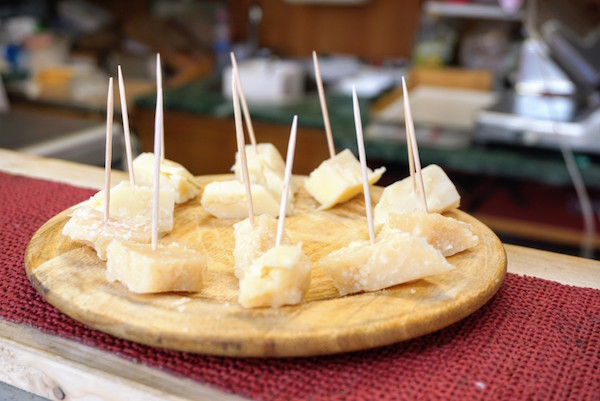
2. Pecorino
Pecorino is maybe the most widespread cheese in Italy in terms of regional variety. Its name comes from pecora, meaning “sheep.” All Pecorino is made from sheep’s milk, and all of it is aged in wheels, but that’s where the similarities end.
Pecorino Romano DOP is produced outside Rome, as well as in Sardinia, and has a sharp, strong flavor that’s essential to dishes like cacio e pepe and carbonara. Pecorino Toscano, from Tuscany, is often eaten younger as part of a cheese course.
3. Mozzarella and other stretched cheeses
Mozzarella is made by kneading cheese curds in hot water until they form a pliable ball, a process called pasta filata. The most renowned mozzarella is of course Mozzarella di Bufala Campana DOP, made from water-buffalo milk and mostly produced around Naples. This is best eaten as an antipasto within a day of production, with a drizzle of olive oil. Buffalo mozzarella is also put on pizza, but more likely (even in Naples), you’ll see fior di latte on pizza, which is cow’s-milk mozzarella that is slightly drier and melts better.
Burrata and stracciatella are fresh variants of mozzarella. The latter, which literally means “little rags,” used the pasta filata technique, but the resulting cheese is shredded rather than formed into a ball. If you took those shreds, mixed them with fresh cream, and then enclosed them in a ball of mozzarella, you’d end up with burrata.
However, if you take a fresh stretched-curd cheese and age it, you end up with something altogether different. True provolone is an artisan cheese produced around Naples, where a pasta filata log is aged until hard enough to slice. Caciocavallo and scamorza are also in this category, and you’ll often see them melted into baked pasta or topping a pizza.
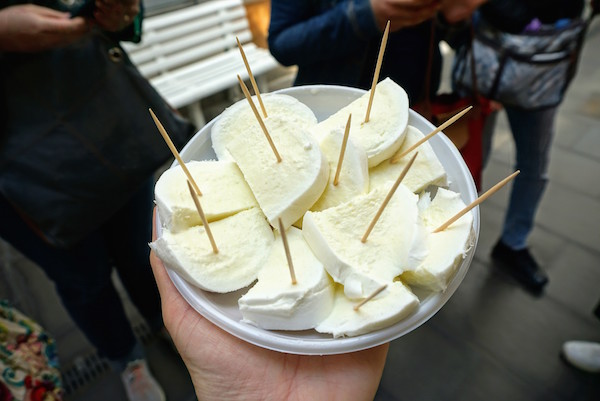
4. Ricotta and Mascarpone
Ricotta literally means “recooked,” because it’s produced by boiling whey leftover from cheese making until it forms curds. The resulting creamy mixture has a soft, pleasant taste that lends itself well to both savory and sweet applications. You might see fresh ricotta in a traditional Neapolitan baked calzone, or sugared and then stuffed into Sicilian cannoli.
In Sicily, and throughout the rest of southern Italy, it’s also common to see ricotta salata and ricotta infornata. The first is fresh ricotta that’s salted, pressed and left to aged until shaveable. The latter means “baked,” as it’s slowly cooked in an oven so a crust forms and the inside firms.
Mascarpone is just the Italian version of cream cheese. Cream (never milk) is acidulated with lemon juice, heated and then left to cool until thickened. Mascarpone is more common in the North of Italy, where it might get stirred into risotto, or beaten with eggs and sugar for a classic tiramisu.
Want to learn the ins and outs of ordering Italian cheese at a real Roman market? Check out our Testaccio Neighborhood Food & Market Tour, where that’s exactly what’s in store!


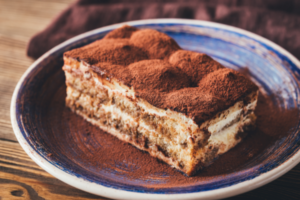






Why “never Campari”?
Rome residents tend to have some strong opinions on their spritzes!